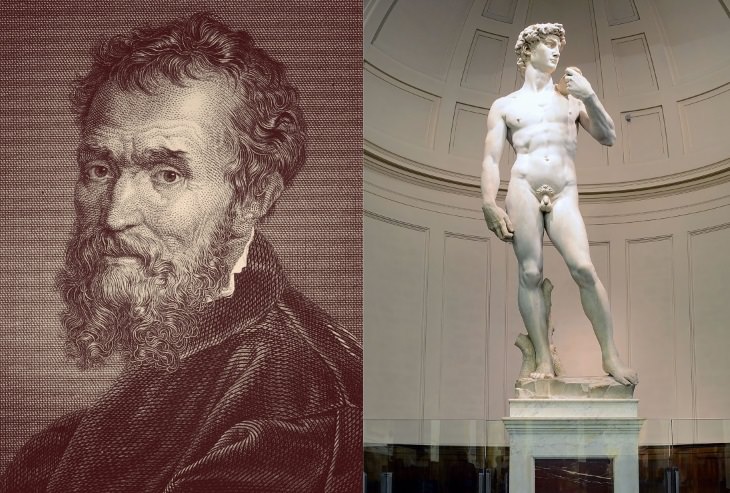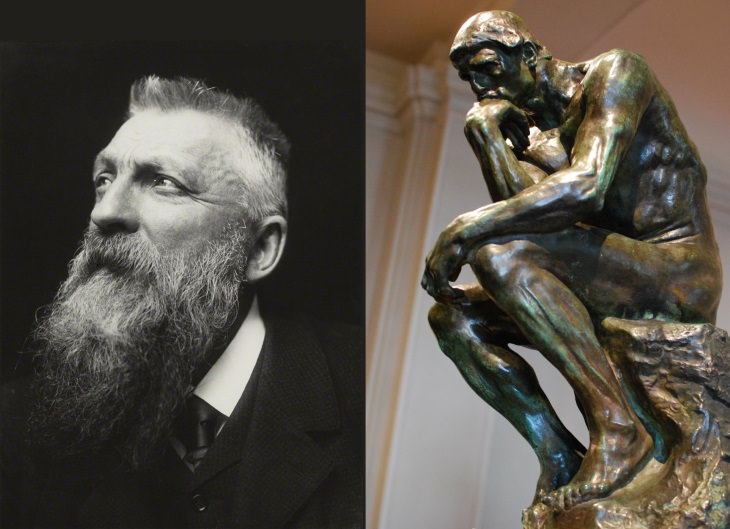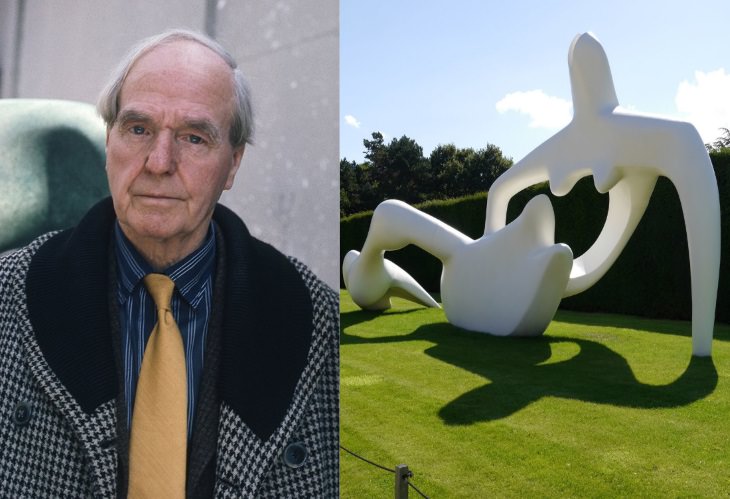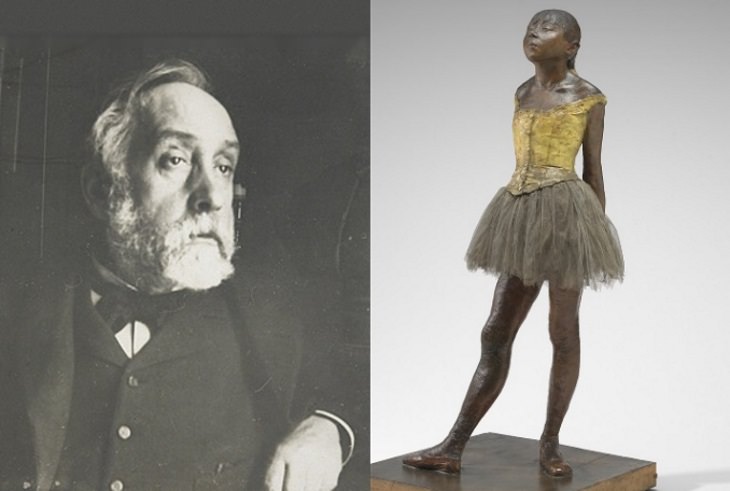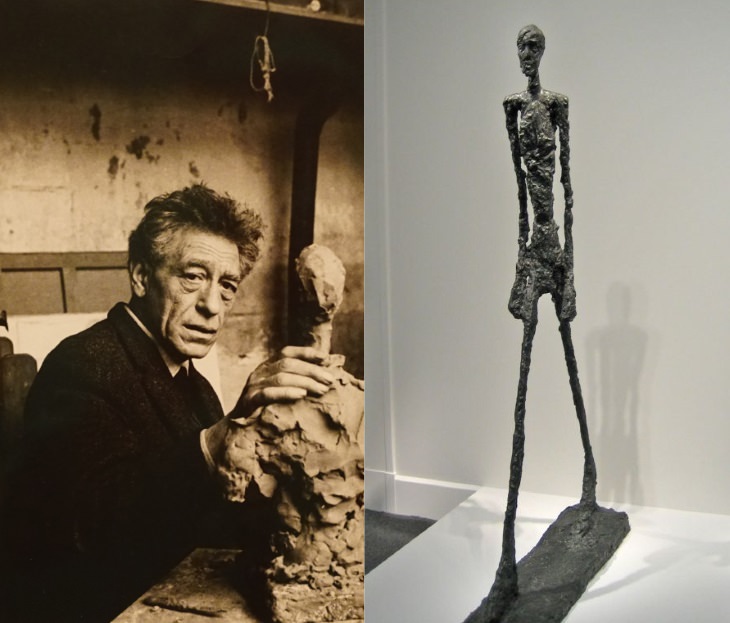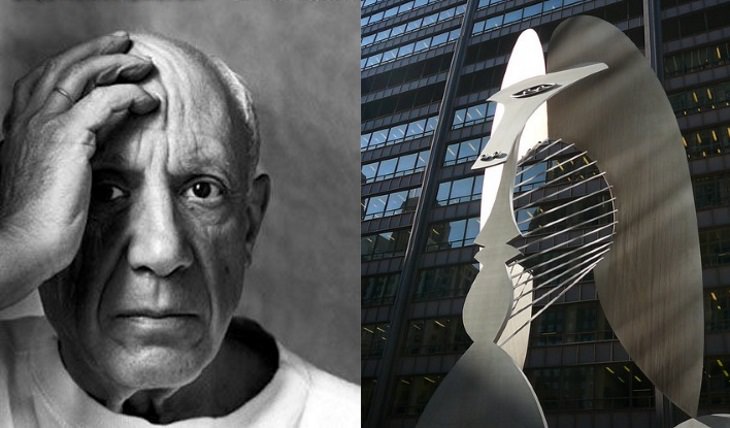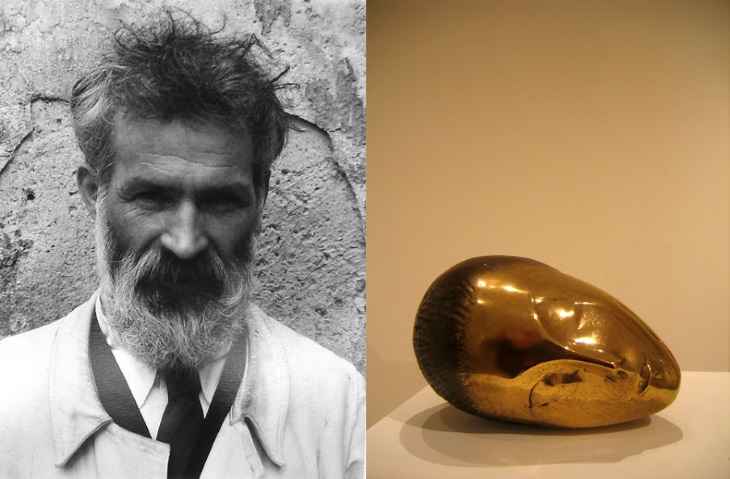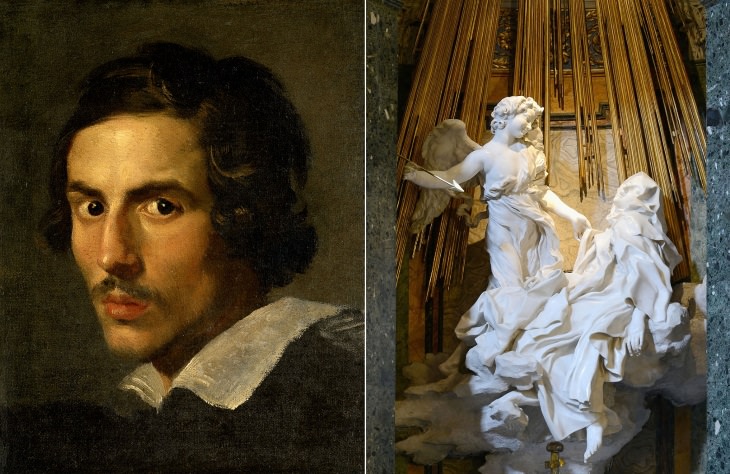1. Michelangelo (1475-1564) and David (1504)
Let’s start this list with an Italian Renaissance sculptor who is widely believed to be the greatest sculptor of all time, Michelangelo di Lodovico Buonarroti Simoni. All subsequent sculptors will be compared to Michelangelo, that's how influential he is.
As you may know, Michelangelo was one of the great masters of the Renaissance along with Leonardo da Vinci and Raphael, and, like the two others, he was a true Renaissance man, being not only an extremely talented sculptor but also an apt painter, architect, poet and engineer. Michelangelo was a massive influence on all the subsequent artists in the West, and his masterpieces, such as "Pieta" and "David" are recognized all over the world.
2. Antonio Canova (1757-1822) and Psyche Revived by Cupid's Kiss (1787)
Considered to be the best European sculptor of the 18th century, Antonio Canova’s work is representative of the Neoclassical style in art that was equally inspired by baroque motifs and antiquity. He is known for his soft-looking shapes and expressive, lifelike works that still heavily relied on antique themes and ideals.
One of the most renowned sculptures by the Venetian sculptor is the soft and sensual "Psyche Revived by Cupid's Kiss" (1787), which depicts the mythological lovers in a moment of great emotion.
3. Auguste Rodin (1840-1917) and The Thinker (1904)
It is rarely the case that one person single-handedly transforms the way we work in a certain artistic medium, but in sculpture, Auguste Rodin, a French sculptor, was exactly that person. For centuries, sculptors strived to be as realistic as possible in depicting the human form, a tradition that started in the Greek and Roman times.
Rodin disagreed, and instead, he was ready to compromise the realism of the sculpture in favor of expressing emotions with his works of art, which gave birth to modern sculpture. Often compared to Michelangelo in his influence on European sculpture, Rodin was truly a visionary and his work "The Thinker" is among the most recognized artworks in the world.
4. Henry Spencer Moore (1898-1986) and Large Reclining Figure (1984)
English sculptor Henry Moore is one of the best representatives of modernist sculpture, characteristic for the 20th century. Like all modernists, Moore’s works deliberately depart from a realistic depiction of specific subjects, and instead, they deconstruct the subject matter into a simplified and yet more metaphorical and symbolic form.
Moore is most famous for his sculptures of reclining figures, which he worked on his whole life since the 1930s. Most of his sculptures are public works of art, situated in parks, squares and other public spaces throughout the world.
5. Edgar Degas (1834-1917) and Little Dancer Aged Fourteen (1878-1881)
Degas wasn’t particularly known as a sculptor in his lifetime, and most people recognize him as a French Impressionist artist, and not a sculptor, but his work titled "Little Dancer Aged Fourteen" actually revolutionized the way we understand sculpture.
This unassuming wax figure of a young girl has real hair and a cloth tutu is very special. It didn’t simply play on the way sculptures are made, but it also depicted an ordinary girl in a very natural, even somewhat uneasy pose, a very Impressionistic feature. When first exhibited in 1881, critics called it ugly, but today everyone recognizes the progressiveness of this work.
6. Alberto Giacometti (1901-1966) and The Walking Man (1961)
Swiss sculptor Alberto Giacometti is considered one of the most influential sculptors of the 20th century, with his creations representing the sculpture equivalent of melancholic existentialist philosophy. The genius sculptor is most famous for the works he started creating as a reaction to World War II.
These are bronze sculptures of extremely tall, slender figures in motion, which inevitably bring about the feelings of sadness, alienation, and loneliness. "The Walking Man" (1961) is a prime example of this series of influential works.
7. Pablo Picasso (1881-1973) and Chicago Picasso (1967)
As it was the case with Degas, Picasso, too, is more famous for his paintings than for his sculptures, and similarly to Degas, Picasso influenced contemporary sculpture in a meaningful way. The famous artist transferred his personal cubist style into sculpture, using wires, sheets of metal and, often, discarded metal parts to create abstract sculptures, the most famous ones being "Chicago Picasso" (1967), "Guitar" (1914) and "Head of a Woman" (1934).
The artist used sculpture as an experimental medium, and the "Chicago Picasso" is proof of that, as, despite being one of the most famous landmarks in the city, no one knows what or whom the sculpture depicts.
8. Constantin Brancusi (1876-1957) and Sleeping Muse (1910)
Considered the headliner of abstract sculpture by many, Brancusi was Rodin’s student. Born into a poor Romanian family, Brancusi moved to Paris after graduating from art school in Romania, and by 1933 he became one of the most well-known sculptors alive. Like it is the case with many modernist sculptures, his sculptures are simplified depictions that aim to transfer the essence of a subject matter and not how it really looks like.
The "Sleeping Muse" sculptures, for example, are a series created in the 1900s that depicts a beautiful sleeping woman, but the actual sculpture is just a head with indentations and scratches mapping out her hair and facial features. Despite looking very abstract, the sculpture manages to transfer the beauty and elegance of the subject matter.
9. Donatello (c.1386-1466) and The Bronze David (c. 1440)
Like Michelangelo, Donatello, too, is a representative of Renaissance sculpture. But you have to understand that the Renaissance lasted for centuries, and there was over a century between these two sculptors, which, to some extent, explains the great difference in their artistic styles.
Donatello was one of the earliest Renaissance masters and he was one of the first sculptors to start imitating Greek and Roman realism in sculpture. At that time, this style was considered very experimental, and sculptures like "Bronze David" (c. 1440) and the "Equestrian Statue of Gattamelata" (1453) were seen as very progressive. Apart from that, Donatello developed many important and novel techniques in sculpture.
10. Gian Lorenzo Bernini (1598-1680) and Ecstasy of Saint Teresa (1652)
Baroque art, architecture, and sculpture are all characterized by an abundance of detail, richness of forms and ornateness, and Bernini’s sculptures encompass all these characteristics, just look at the abundance of fabric folds and the marble and gold background in the image above (also designed by Bernini).
Another feature of this period in art was the focus on Biblical motifs, and Bernini’s masterpiece, "Ecstasy of Saint Teresa" highlights this as well. Like Rodin, Bernini was compared to Michelangelo in terms of his accomplishments and is regarded as the originator of this rich and ornate High Baroque style.

